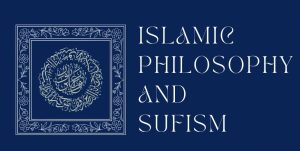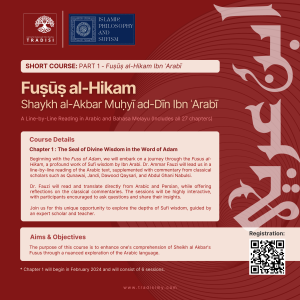Islamic Philosophy and Sufism
Module 1
Introduction to Islamic Philosophy and Sufism
Module 2
Faith and Critical Reason
Module 3
Classic Islamic Texts: From the Qur’an to the Islamic Humanities
Module 4
History Islamic Philosophy
Module 5
Sufism and Political
Module 6
Islamic Spirituality In The Malay World
Islamic Mysticim (Irfan Studies)
Module 1
Introduction to Islamic Mysticism
This course is an introduction to contemporary visions and scholarship of Islamic philosophy and mysticism emphasis on major figures and themes. Topics covered include: (i) Iranian, Greek, and early theological background;(ii) Classical age of Islamic philosophy with an emphasis on ibn Sina’s philosophical system; (iii) the philosophy-religion-mysticism controversy; (iv) development of later Islamic philosophy in Iran with an emphasis on Tusi and Mulla Sadra; (v) basics of Rumi’s mysticism and brief remarks on mysticisms of ibn Arabi, Tusi, Shabestrari;
Module 2
Tusi’s Mysticism: Texts and Analyses
This section, first clarifies Tusi’s position in light of both conceptual categories of mysticism and comparative studies with works of other celebrated philosophers. Second, it focuses on the actual doctrine of Tusi in his major text on mysticism, AA, as well as in the mystical dimensions of his other works.
Module 3
Suhrawardi’s Educational Thought: Texts and Analyses
Shihab al-Din Suhrawardi, a pivotal figure in Islamic intellectual history and the founder of the Illuminationist school of thought. Employing a blend of qualitative textual analysis and historical investigation, this research primarily focuses on Suhrawardi’s major works to extract and understand his views on knowledge, learning, and pedagogy.
Module 4
The Mediator Figure (MF) in Islamic Mysticism
I. Clarification of MF in Everyday life
II. Paradigm cases of MF in western literature
Plato and Neoplatonism
Depth psychology
William James
III. Paradigm cases in Western Religions
Judaism: “chosen people”
Christianity: “Christ”
Islam: “The Qur’an”
IV. Context of the MF in Islamic mysticism
(a) In the tripartite division of Islamic intellectual tradition: religion (prophet)
/philosophy(knowledge) and mysticism (love- authentic receptivity)
(b) In our study of Sufism in the light of Monistic Sufism (as used by Zaehner)
(c) Two cases in Islamic texts
Avicenna’s Hayy ibn al-Yagzan
Nasafi’s al-Insan-i Kamil
B. Four senses of MF
I. Standard sense of ‘murshid’
II. Extroverted mysticism –a drop of water, river and the sea
III. Introverted mysticism – the inner teacher
IV. Iconic significance of nature as related to other dimensions of Islamic
principles – (spiritual stoicism)
(a) Witnessing (shehadda)
(b) Authentic receptivity (kasb)
(c) Resignation (ridha)
C. Conclusion
Module 5
Reading (Texts, handouts, and on-line courses)
- Metaphysica Avicenna, P. Morewedge. Columbia University Press, 1970.
- Metaphysics of Tusi, tr. P. Morewedge. SUNY Oneonta, 1999.
- Parviz Morewedge, from Oxford Encyclopedia of Islam, ed. John Espoisto. Oxford University Press, 2009. “Islamic Theology,” “Illumination,” “ Jallal ad-Din Rumi,” “Mirdamad, ” “Mulla Sadra,” and “N. Tusi”; from Routledge Encyclopedia of Philosophy “the school of Qum”;from McMillan Encyclopedia of Philosophy, “Tusi”
Module 6
Neoplatonism and Islamic Thought


